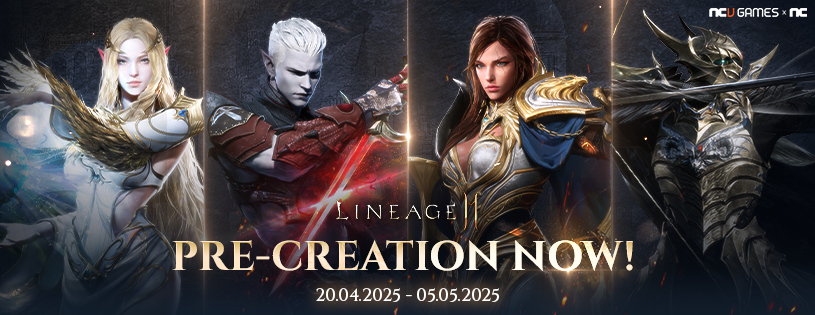I don’t typically write reviews for individual TV episodes, but Star Wars warrants an exception. To quickly frame my perspective on Star Wars: I believe Disney’s Star Wars pales in comparison, George Lucas is King, the Expanded Universe (EU) is superior, I identify with the Fandom Menace, and I see Dave Filoni as the future of the franchise. With this context, you can understand my approach to this episode.
The Ahsoka series has shown a clear progression in storytelling quality. Episodes 1 and 2 felt slightly disjointed in terms of pacing and narrative. Episode 3 delivered enjoyable action sequences, and Episode 4 captured the quintessential Star Wars ambiance I yearn for. Then, Episode 5 arrived with the impact of Obi-Wan disrupting a CIS assembly, far exceeding my expectations. It might just be the best live-action Star Wars production since Disney’s acquisition. While “The Mandalorian” (Seasons 1 and 2) and “Andor” have their merits—the Luke episode in “The Mandalorian” being a standout—Episode 5 of Ahsoka captured the enigmatic allure of the Force, reminiscent of the “Empire Strikes Back.” Dave Filoni’s description of it as a “religious experience” resonates deeply.
ANAKIN’S FINAL LESSON
Amidst the vivid memories and flashbacks of Ahsoka’s experiences from the Clone Wars, which were masterfully brought to life in live-action for the first time, we gain insight into the constraints of the show’s budget while cleverly using it to their own advantage of giving us a fog-of-war. These glimpses into the past not only familiarize us with past events, but they also allow us to journey alongside Ahsoka as Anakin guides her (and us) through a path of self-rediscovery and rebirth. He beautifully illuminates the essence of being a Jedi and the challenges of reconciling personal experiences with the legacy one inherits. This journey is about evolution and the continuous battle one faces in life. Live or Die.
Furthermore, the episode elucidates the genuine concept of Balance in the Force. It’s not about eliminating or the absence the Dark but about recognizing and reconciling the darkness within oneself, enhancing one’s character by being in harmony with Living Force. This message was vividly conveyed with unmistakable references to the Original Trilogy, particularly in “Return of the Jedi” when Luke refrains from using his lightsaber to kill Darth Vader. He defies the Emperor, showcasing his mastery over his emotions and his alignment with the Light side of the Force. Similarly, Ahsoka resists delivering the final blow to Anakin. Instead, she reveals the Sith eyes, a symbol of the darkness within her, but also her control over her emotions and her decision to stand her ground.
AHSOKA THE WHITE
From this transformative experience, Ahsoka emerges reborn, symbolically cleansed in the waters as “Ahsoka the White.” The enchanting score by Kevin Kiner amplifies this rebirth, introducing us to an Ahsoka who exudes hope and lightness, a refreshing change from her previous persona. Her radiant smiles and playful quips become more frequent, her hope palpable. The most profound change? Her newfound trust and faith in the Force. This trust is epitomized when she willingly lets herself be carried away by a giant space whale, reminiscent of Jonah from the Bible, capable of making intergalactic hyperspace jumps without a clear destination. The Ahsoka of old, Ahsoka the Grey, would never have chosen this unpredictable path. But the renewed Ahsoka the White embraces the unknown with hope and audacity. In contrast, Huyang, representing the traditional Jedi ways, can only watch, astonished and speechless. As triumphant music plays in the backdrop and Hera delivers the iconic line, “May the Force be with You,” one can’t help but feel that this season could conclude right here, leaving viewers wholly content.
SHADOW WARRIOR
Who, or what, is the Shadow Warrior? The title unveils much about Filoni’s intentions and the wisdom he has absorbed from his mentor. The Shadow Warrior isn’t necessarily a specific character but symbolizes someone existing under the shadow of predecessors. This shadow can be the legacy of influential figures or an embodiment of personal darkness—dark aspects that one conceals or, in the case of the Shadow Warrior, uses as a source of strength.
Filoni’s narrative seems to echo the Buddhist scripture of the Bhagavad Gita, reaffirming George Lucas’s inspiration from Buddhist teachings in shaping the concept of the Force. Furthermore, the name “Ahsoka” has deep roots in Buddhist history. Yet, let’s pivot to a psychological perspective.
Carl Jung, the esteemed psychoanalyst, introduced the concept of “The Shadow.” This represents aspects of ourselves that reside in our unconscious—traits, desires, fears, and behaviors that we might suppress, deny, or be oblivious to. They can be both beneficial and detrimental: unacknowledged talents or unadmitted negative behaviors. Because they’re repressed, they often manifest in indirect ways, such as in dreams or emotional outbursts.
Jung posited that confronting and integrating the Shadow is vital for personal growth and individuation. This doesn’t mean eradicating it but recognizing its presence, comprehending its impact, and harmoniously assimilating it into our conscious existence. This integration fosters profound self-awareness, reconciling the darker facets with conscious identities, cultivating a comprehensive self-understanding.
Interestingly, “Shadow Warrior” translates to “Kagemusha” in Japanese. This is also the title of a renowned film by director Akira Kurosawa, whom Lucas greatly admired. Lucas and Francis Ford Coppola even helped secure funding for “Kagemusha” (1980) during a challenging period in Kurosawa’s career.
“Kagemusha” unfolds in 16th-century feudal Japan. When the formidable warlord Shingen Takeda meets his demise, his clan endeavors to conceal his death. They recruit a thief, resembling Shingen, to impersonate the fallen leader. As this thief navigates the treacherous realms of politics and war, he becomes deeply enmeshed in his role as Shingen. But upholding this illusion grows strenuous, culminating in inevitable conflict. The film contemplates identity and power dynamics, embellished with captivating battle sequences and historical nuances.
Kurosawa viewed “Kagemusha” as a precursor to his magnum opus, “Ran” (1985). One can only hope that Ahsoka’s Episode 5, “Shadow Warrior,” sets the stage for something equally monumental in the Star Wars universe.
FILONI AND THE FUTURE
The sentiment “In Filoni We Trust” has never felt truer, given the level of trust I’ve placed in Filoni to craft some of the most compelling Star Wars narratives since Disney’s acquisition. By and large, I believe he’s met those expectations. While not every story hits the mark, Filoni, echoing the spirit of George Lucas’s vision, has frequently impressed me. Just as episode 5 felt akin to a religious experience, I’ve learned to place faith in Filoni’s knack for crafting intriguing narratives. His character dialogues may not always be straightforward, but they often serve a deliberate purpose. When fans criticized Ahsoka’s stoic demeanor, Filoni revealed it to be an intentional decision. True, the character could have been more dynamic, but the audience’s interpretation of that portrayal speaks volumes about its effectiveness.
This episode also beautifully revives the ambiguity, mystique, and profundity of the Force. When Lucas introduced the Midichlorians, it somewhat sapped the Force of its mystery, ushering in an era of scientific explanations and definitive answers. Fans began demanding unequivocal clarifications and rigid rules. However, Filoni reintroduces the idea that understanding the essence of a story is paramount, even if all questions remain unanswered. Speculation, theorizing, and diverse interpretations enrich the narrative experience, and not everything should be overtly explained. Even those unfamiliar with the Clone Wars and Rebels series can appreciate the story by picking up on the clues Filoni deftly plants.
Moving forward, Filoni is the future of Star Wars. You may not like the guy. You may not agree with the guy. But you cannot deny that he can write Star Wars like how George Lucas would do it. And at the end of the day that is what we want as a fanbase and as a franchise. The Filoniverse is more interesting than any other Star Wars timelines that Disney and Lucasfilm are trying to peddle to us at the moment. And it has a future that more potential to be greater. Sure… All roads lead to the Sequel Trilogy… let’s just for now enjoy and tell Disney and Lucasfilm that this is the right direction for the franchise. And eventually… we’ll just go past through the hurdle soon enough. Have faith.















